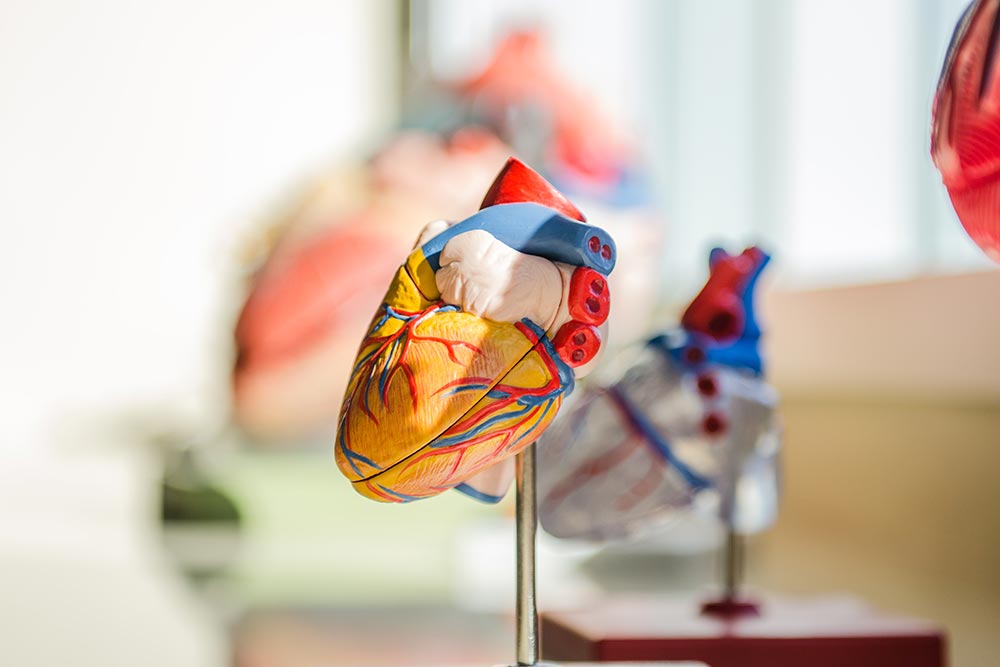Table of Contents
Heart failure is a life-threatening condition that affects millions of people around the world. It is a condition where the heart doesn’t pump effectively. This can lead to low blood pressure, chest pain, shortness of breath, and fatigue.
Heart failure can surely lead to death when not treated and cared for right away. After a heart attack, further complications may be caused by blockages in blood flow through the long and shorter coronary arteries, leading to ischemic heart disease.
Fortunately, treatments are available that can improve the heart’s health and potentially save someone’s life. This article will discuss what heart failure is, its symptoms, causes, and the various available treatments.
What is Heart Failure
Heart failure is a condition in which the heart cannot pump enough blood around the body. This means that too much fluid builds up with the heart, which can cause it to stop working. As a result, the organs and tissues that need blood (such as the brain) start to fail. Suppose this is left untreated for a long time. In that case, the patient may start feeling shortness of breath, have chest pains (angina/chest discomfort), and fatigue due to over activity during exercise.
Doctors usually diagnose heart failure by taking a careful history of the symptoms and ascertaining if people have been treated for other conditions that may be causing them. This involves looking out for some common changes, such as swelling in the ankles or legs, numbness/tingling hands/feet and unusual fatigue on standing up after lying down.
Types of Heart Failures
There are many types of heart failures.
The most common ones are idiopathic dilated cardiomyopathy (IDCM) and hypertrophic cardiomyopathy (HCM).
Idiopathic Dilated Cardiomyopathy (IDCM)
IDCM is a condition in which the myocardium (the muscle layer of the heart) becomes enlarged and stiff, typically due to a decrease in oxygenation. This can lead to chest pain, shortness of breath, and irregular heartbeats.
Hypertrophic Cardiomyopathy (HCM)
HCM is a more severe form of IDCM. The myocardium becomes thick and concentrated in some areas, typically the left ventricle (the chamber that pumps blood out of your heart). This can lead to arrhythmias (abnormal rhythms within the heart), congestive heart failure, and sudden death.
Each type of heart failure is characterized by one or more of the following:
- Difficulty breathing due to reduced blood flow to the lungs
- Swelling of the heart and other organs due to excess fluid retention
- Irregular heartbeat due to a problem with the electrical signals that control the beating of the heart
- Decline in physical fitness due to tiredness or exercise intolerance caused by the condition.
Heart Failure Symptoms
The most common symptoms of heart failure are shortness of breath, fatigue, and lack of energy. Other symptoms may include chest pain, dizziness, and swelling in the legs or feet. There is no one-size-fits-all answer to its surfacing, as the symptoms of heart failure will vary depending on the individual’s age, health history, and other factors.
However, if anyone experiences any of the following symptoms, it is advisable to see a doctor:
- Shortness of breath even when resting
- Extreme difficulty in exercising
- Fatigue that lasts for more than a few hours
- Dizziness or lightheadedness despite being upright
- Swelling in the legs or feet
Causes of Heart Failure
There are a few different reasons why someone might experience heart failure, but the most common causes include:
- Aortic aneurysm – It is a weakening of the wall of the aorta, which is the largest artery in the body. This can lead to blood leaking from the aorta and into other body parts, including the lungs, causing chest pain and shortness of breath.
- Aortic stenosis – It is a narrowing of the space between the inner wall of the aorta and the outer layer of your cardiovascular system. This can cause reduced blood flow to your heart, leading to heart failure.
- Mitral stenosis – It is a narrowing of the space between two layers of your heart muscle – this can also lead to reduced blood flow to your heart, which can lead to heart failure.
Common Treatments For Heart Failure
Although there have been multiple heart failure clinical trials conducted worldwide, there is still no universal cure. Although, there are some treatments available for people who are afflicted with it and in danger of losing their lives. Here are some of the most common treatments being utilized:
- Heart transplant – This is the most effective and life-saving treatment for heart failure, and it is available to those in the worst condition.
- Angioplasty – This is a procedure that is used to open up blocked blood vessels in the heart, which can then allow more blood flow to the failing organs.
- Cardiac rehabilitation – This is a combination of physical therapy, diet counseling, and emotional support designed to help people with heart failure regain their health and improve their quality of life.
- Medications – Numerous medications can help improve heart failure symptoms, such as ACE inhibitors or beta blockers.
Heart failure is a condition that plagues the world today more than we know. If you or someone you know is suffering from heart failure, seek out professional help. You never know when it might be the best time to turn to heart failure treatments.

